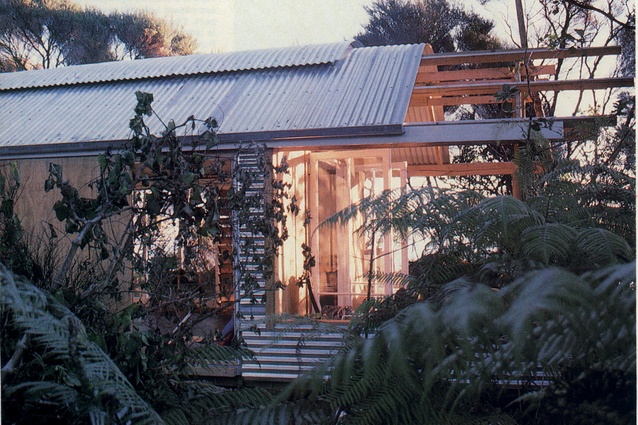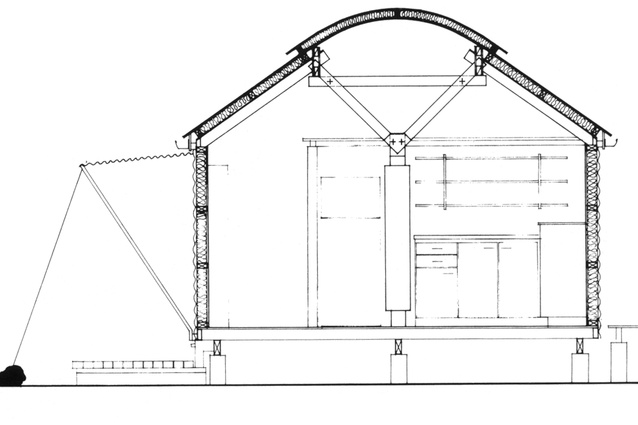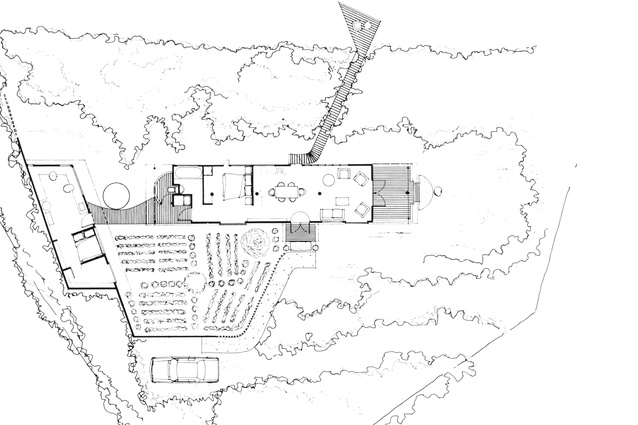A project remembered
In 1985 David Mitchell, of Mitchell & Stout Architects, was commissioned to design a modest house to sit in the bush above Muriwai beach. Thirty years on he remembers the process and plans a new, even more elementary dwelling.

This little house was built by Murray Stanisich, virtually by himself, through the summer of 1985-86. Alan Preston, the owner, was a friend of mine, a jeweller, a person of most particular tastes, and absolutely no pretensions. His site was high above Muriwai – a patch of manuka above a steep slope to the west. His garage is a tarp in the ti-tree. He likes the toilet off the verandah. I didn’t know anyone with humbler aspirations. You can see that in the plan.
I had been working on a seriously high-end house when Alan rang me. He told me he had $6,000 in the Post Office Savings Bank. I didn’t know what to say, but I couldn’t resist him. Alan showed me a picture of an old corrugated iron chemical store building he liked, and I started to use that as an aesthetic trampoline, trying to put corrugated iron together cheaply, but graciously.
The cross-section is the key to the building. The whole house is only four metres wide, with posts on the centreline, like a traditional Pacific building – a tiny whare, you might say. You could extend it lengthwise, no trouble. Alan loves Pacific artefacts, and that is what his own jewellery is.
I didn’t let the posts go full height to the ridge like a Maori whare, instead using diagonal struts to hold the roof beams apart. That way I got a roll-over roof a bit like Alan’s picture, while avoiding the literal form of the meeting house with its central ridge beam and posts.

Cultural appropriation was a sensitive issue – it was a few years after the ’81 Springbok tour, and in any case I wasn’t fond of cheap cross-cultural references in architecture. Alan’s chemical store was an appropriately humble formal origin, but no fancy claims could be made. Architecture was a building, not a metaphor for something else.
And now, 30 years later? Architecture is still a building, not a metaphor. An architect can’t look back, so today I wouldn’t change that house. It probably directly affected the Heke St house Julie Stout and I designed for ourselves a few years later. In that design the roofs are two layers of arched corrugated iron, spaced apart so they could be insulated, and – like the Preston house, there are box-beams of plywood. The building tells you how it is made. I’m thinking of an insulated fabric version now, with posts and cables, and not much else.
One thing leads to another.















